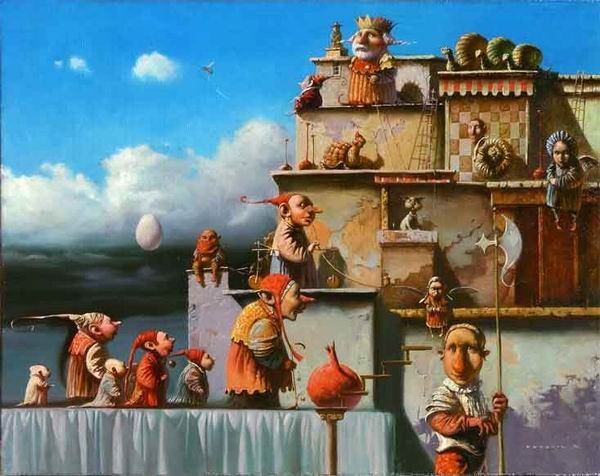
Pawns Adventures
Intended level: late beginner/early intermediate
Let us put it bluntly, without us Pawns there would be no chess.
Just imagine this possible scenario at the start, there is no phalanx of pawns on the two confronting sides. What would follow? An inevitable trade war, et voila, after ten moves or so, a draw would be reached quickly. And you would call it chess?!
I have to tell you, I really detest that old worn-out adage, I really do, like "we are the soul of chess." Why? Because you cannot see the whole truth about us Pawns. As you saw above, without us, the game would end peacefully in a tie after ten moves or so. It would be an all-tactics, but very boring game.
But thank Caissa, chess is a game of strategy. Thanks to us!
Strategy Is principally and inescapably related to Pawns. Essentially, it is positioning of troops. The general, the strategist, spreads out his army across the battlefield to best serve his hopes of securing victory. Strategy, therefore, is about building up troops, primarily the infantry, the boots on the ground, and deploying them according to the actual situation and intents on the battlefield.
Rightly speaking, the pawn formation is the very essence of strategy. Strategy is pawn play by default. Every pawn movement carries strategic character. When the last pawn is removed from the board, while there's still calculation and planning, there's no more strategy, only tactics is left.
Here follows one of a series of posts on pawns I wrote back in 2012.
.
MIGHTY PAWNS
At each move we have to make a sober evaluation of the course of power struggle on the board. Chess books and authorities teach us it requires a consideration of many static and dynamic factors (the king safety, material imbalance, center, weak and strong points, space, who possesses initiative, etc).
The pawn formation ranks high and most times deserves priority among these elements. Although pawns are the “weakest” army units, they have special qualities that often determine the character of position and strategic plan, or a combinative assault that follows.
Let’s face it, one of the trickiest things in chess is to truly understand the role and power of pawns.
 The Pawns C and D, chess art by Samuel Bak (the c-pawn is the main actor of the happy story below)
The Pawns C and D, chess art by Samuel Bak (the c-pawn is the main actor of the happy story below).
The characteristics of position, getting an idea what the position is calling for, is primarily created by the relationships among pieces and pawns and how they coordinate their action to fulfill some designated objective. It is the arrangement of pawns that determines whether you will have a good piece play or not. Whether your rooks will have files and your bishops diagonals.
We have to understand those “hidden” relationships between pawns and pieces that condition any serious plan on the board.
Pawn structure is the terrain of a battlefield. The stronger center offers the high ground that every general desires. The absence of pawns creates open files and diagonals — the valleys and ridges that deliver access routes into the hands of the attacking army. — GM Andrew Soltis
Studying the pawn structures is of high importance for your chess improvement. How the structures are brought about and what comes out of them. And identify the causes behind the process. The result is inevitably rewarding.
When the pawn structure changes, it forces players to reconsider their previous plans. Even one-square advance of single pawn will require you to reevaluate your strategy. Mastering those subtleties will pay off in your chess results over the board.
Pawns are usually better suited for guarding important squares and pieces than are pieces themselves. They are the best means of blockading enemy pawns, or, by advance, opening vital files and diagonals, creating weaknesses in the opposite camp and taking important squares away from the enemy pieces.
Let’s examine the following position from Boleslavsky-Stoltz, Stockholm 1948:
Without the help of mighty pawns White wouldn’t be able to refute the Black’s flank diversion by the counter-strike in the center (a usual procedure in similar situations). The two pawns gave their life for the fatherland to clear out the way for the white bishop, knight and queen to deliver a heavy blow to the enemy king.
Pawns are the very Life of this game. They alone form Attack and Defense. — Philidor
.
.
